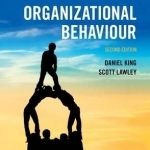Ryan Hill (152 KP) rated Man of Steel (2013) in Movies
May 21, 2019
As with all Superman mythology the story begins on Krypton, the planet that's hundreds of thousands of civilized years ahead of Earth. The whole planet is science fiction nirvana. The zooming spaceships, winged beast and advanced technology crafted from liquid metal. For once we experience the entire planet, not just a couple rooms made out of cheap crystal. There's a system of ways things work that has never been fleshed out on screen before. The government, the science and it's culture. At the head of the planet's scientific research is Jor-El (Russell Crowe) and he has discovered proof that may lead to the planet's destruction. But unfortunately his pleas towards his leaders are ignored due to the ongoing civil war with Jor-El's old friend General Zod (Michael Shannon). There's more history to the Jor-El/ Zod dynamic this time around which just enriches their conflict. There are millions of stories concerning Marlon Brando's $3 million dollar slumming in the '78 film. He intentionally mispronounced Krypton, made outrageous production demands and in the end that put him on the cutting room floor for it's sequel. Crowe see's Brando's paycheck acting and raises it with a performance full of gravitas. When conflicts begin to soften and punishments are served, more and more evidence begin to support Jor-El's claims of Krypton's destruction and with time and options exhausted, his final resort is to save his only son Kal-El. Still an infant, Jor-El concludes the only way his son will ever have any chance of life is to be sent to a more primitive alien planet and have a significant advantage over it's species. So he sends him to Earth, where it's sun will grant his body incredible abilities.
Jump 33 years later as the adult Kal-El, now under the name Clark Kent (Henry Cavil) is wandering the world trying to discover his place in it. There are multiple flashbacks to Clark's childhood with his adoptive parents Jonathan and Martha Kent (Kevin Costner and Diane Lane). Costner gives a heartfelt performance full of warmth as the father concerned with his son's well-being if the world rejects him. If someone with Clark's abilities were to be exposed to the public, it would be one of the biggest moments in human history. His existence alone would make everyone question religion, science and everything they had ever thought about the universe. And Lane strikes quiet, charming notes as the more understanding mother. Throughout his entire life Clark had been using his powers in secret, from saving derrick workers from fires to fighting a massive hurricane in his hometown of Smallville. If there's one word to describe Cavil's performance it's "Modern". He is not the "Aw shucks" farm boy nor is he the angst filled mess many feared he was going to be. There's still a humbleness, a sweetness and a sense of forthrightness to him. And of course he is a perfect physical representation of the character as well. As much as Christopher Reeve's performance still means to audiences today, it has reached a point where it has unfairly overshadowed the character. The idealism of Reeve's Superman isn't relevant today, at least not in the purest sense of the word. Cavil's Superman understands the difficulty of what his powers mean for the world and understands there really isn't anything to smile about.
Of course you can't tell a Superman story without his supporting players at the Daily Planet. Perry White (Laurence Fishburne, in an inspired piece of casting) knows the only way a newspaper could ever have hope at functioning these days is if they had major exclusives to the first alien ever revealed to the masses. Enter Lois Lane (Amy Adams, full of spunk) who has been chasing Clark's story all across the globe for several years. Lois has always been a tricky character to adapt, seeing how it's difficult for audiences to like her if you get it wrong. Can somebody who can't see Superman past a pair of thick glasses really be a Pulitzer Prize winning journalist? Thankfully, this Lois isn't as Shrill as Margot Kidder or as bland as Kate Bosworth in previous versions. Snyder and Adams treat Lois as the talented, dedicated journalist we know she really is by making her active at her profession and not having to prove anything just because she's a woman. The only thing she has to prove are her credentials, which are just as impressive as everything else about her. While some might be disappointed by the lack of romance between the couple, but to be fair, this isn't a Lois and Clark story, it's the story of Clark discovering his place in the world. But the spark between the two of them is certainly present when they first meet. For Clark to go from a lifetime of loneliness to have somebody instantly discover everything about you and admiring all of it is a luxury he has never had before.
Clark couldn't have picked a better time to make his presence known to the world, with General Zod returning to finish what he started. The cinematic Superman villains have created a history of scenery chewing performances dating back to Gene Hackman's Lex Luthor. Terrence Stamp was the first actor to portray Zod on film in Superman ll, but despite some memorable dialogue ("Kneel before Zod!") he was still essentially just a typical mustache twirling maniac. Zod this time around is nothing but bold tactics and is fully fledged to preserving his lost race, no matter what the cost. Michael Shannon is nothing but pure, demented megalomania. The only disadvantage Zod possesses though is that his body isn't used to the yellow son and must try and control all his new powers at once. Clark on the other hand, has had a lifetime to perfect his gifts.
Visual aesthetics have leaped skyscrapers since the Donner era. Snyder takes that technological advantage and gives fans what they have dreamed of for years. To put it bluntly, to see Supes punch somebody- really fucking hard! Snyder understands all of Superman's abilities and test them on the grandest scale imaginable. And he does so without resorting to his trademark slow-mo sequences and putting macho fantasies on display. In terms of action alone this is the first time the character has been given justice. Even as bombastic or repetitive it occasionally becomes, it can easily be forgiven because the character has been so overdue for it. It is unfortunate that cinematographer Amir Morki captures it all in a rather unpolished handheld style. But at least Snyder's chaotic direction finally seems to have a sense of aim and isn't relying on green screen to tell his stories. It may have to do with the influence of Nolan producing, but the end result is gloriously flashy, gritty and contains a well needed sense of gravity. And while Man of Steel never reaches the same dizzying heights as Nolan's Dark Knight trilogy, it still preserves and reintroduces it's legendary character in the same respect.
Snyder, Nolan and Goyer certainly have stayed true to the modern lore of Superman by adapting elements of his classic comic stories Birthright, Man for All Seasons, New Krypton and Earth One, and do so without damaging or over-explaining any of it. But if anything it's a science fiction story first then a comic book adaptation, in the vein of such first contact films as the original Day the Earth Stood Still and War of the Worlds. Man of Steel reminds us that Superman is not human, but still represents the best that humanity has to offer. It's the story of fathers, understanding your roots and taking hold of your destiny. It's always been that way for Superman, ever since he was created by young Jewish immigrants Jerry Siegel and Joe Shuster.
While the original theme music by John Williams is still the granddaddy of all superhero cinematic anthems, Hans Zimmer still creates a thunderous pulse of a score. Atmospheric, gentle and adrenaline charged, Zimmer accompanies Clark's drifting, the concerns of his parents and Superman's clashes with one perfect note after another.
Christopher Reeve for many people is still going to be the definitive Superman, but that's too be expected. For so long that's all we've had to go on as far as a great man of steel. There are multiple generations separating Reeve and Cavil and multiple generations separating their audiences. Will everyone accept Cavil as this modern Superman that understands today's humanity? As with Batman Begins, the conclusion doesn't technically set itself up for a sequel but it establishes an iconic part of it's universe in a nice wink that makes you want to see more of it. It isn't quite perfect, but this universe certainly deserved to grow. Because unlike what occurred in 2006, this time Superman really has returned.

Muscle System Pro III
Medical and Education
App
** MASSIVE price reduction for a limited time only! ** DEVELOPED IN COLLABORATION WITH STANFORD...
Gareth von Kallenbach (980 KP) rated Klang in Video Games
Jun 19, 2019
The Story:
The premise here is very simple. You assume the role of a tuneblade-wielding elite rave warrior called Klang who wants to free himself from the shackles of a Zeus-like figure named Soundlord Sonus. And so the game begins. There is barely any Story here and it isn’t the focus of the game and it doesn’t contribute to the game whatsoever and if the story is removed entirely, you will barely notice any difference. So if you are the type who plays a game for the story in it or a game that is accompanied by a good premise, then this game isn’t for you. The game focuses mostly on its gameplay aspects.
The Visuals:
The visuals of the game look very beautiful with its Tron-inspired aesthetics. Klang’s design is colorful and stylish. The environment looked gorgeous with all the vibrant neon colors popping out on the screen while you’re playing but on rare occasions, they can be distracting and a bit too much when there are so many things happening at once.
The Sound:
This is one of those games that are worth buying a quality headset or a subwoofer for because the sound design is excellent and the composer bLiNd did a marvelous job with it. Listening to the music with a normal headset or your TV’s sound system doesn’t do it justice. And the way the music and the beat sync with what’s on screen are perfect. The soundtrack is most definitely the best aspect of the game.
The gameplay:
The game mechanics tries to blend rhythm game mechanics and platform game mechanics into one game. That means instead of only pressing buttons that appears on the screen like you normally do in Rhythm games, you also have to traverse the levels by jumping and sliding while pressing the buttons in order to get through the stage.
The controls are fairly simple. Like most 2D games, you use the left thumbstick to move the character left and right and you use the Right thumbstick in one of the eight directions when the icon that looks like a slice of Pizza appears on the screen in one of those eight directions to deflect the incoming attacks. And you use LT to jump and RT to slide throughout the levels.
While blending those game mechanics works very well on most stages, they can also be overwhelming and frustrating at times. For instance, there is a place where you have to dodge lasers by jumping between 5 platforms that falls when the lasers make contact with them (They come back up after a few seconds) so you will have to jump left and right fast and all that combined with rhythm gameplay. It gets very confusing because there are so many things happening at once on the screen and you don’t know whether you should focus on deflecting the attacks or focus on the lasers. One mistake and you are dead so that made it a bit frustrating and annoying instead of challenging. There is a thin line between a game that put your skills to the test and a game that simply frustrates you to cover its flaws.
Unfortunately, I felt like this is the latter because the game itself is very short and if I hadn’t died in the game over 300 times, it would have lasted me an hour. So I felt like the difficulty spike was there just to mask the game’s short length which brings me to the final point in the review.
Difficulty, Length and Replay Value:
The game has three difficulty levels. Easy, Normal and Nightcore Mode. The higher the difficulty, the higher rank you can achieve when you finish a stage. On Easy mode, B Rank is the max possible rank, Normal mode, S Rank is the max possible rank and on Nightcore Mode, SSS Rank is the max possible rank. Also the higher the difficulty, the faster the game music sounds, and the faster the button prompts on screen moves
I started the game on Normal mode it took me 3 hours and 311 deaths to finish. Once you finish the game for the first time, you unlock the hardest mode in the game which is called NightCore mode where everything moves so fast and that includes the music.
In terms of Replay Value, there isn’t much to do after you finish all the stages except for collecting Pirate Tokens which are the in-game collectables that allow you to unlock the game’s Soundtrack in a special level where you can hear them without replaying the other levels just to hear that awesome track.
And you can also replay the game on Nightcore mode if you want to get the highest rank possible in the game. And if you are the Achievement Hunter type then you will find that getting all the achievements will be very time consuming. For instance, there is an achievement that requires you not to die even once throughout the whole game and that is excruciatingly difficult. So, if you are a completionist, then the game will last you for quite a while.
But if you are not, then you won’t find much to do here after you finish its short story mode because it doesn’t have much to offer after that.
Conclusion:
Klang is a great game but its short amount of content and sometimes overwhelmingly difficult levels can put you off. So for that, I give Klang 4/5. Great concept but if the gameplay was more fun and rewarding, and it had more content and unlockables, it would have been a superb game. And I give the developer Tom-Ivar Arntzen SSS for effort and for trying to innovate and do something new with the genre and I am definitely interested to see what he is going to do next.
http://sknr.net/2016/09/23/klang/
Gareth von Kallenbach (980 KP) rated Vampires Suck (2010) in Movies
Aug 8, 2019
Becca (newcomer Jenn Proske) is forced to move to Sporks, Washington, with her deadbeat father and town sheriff, Frank Crane (Diedrich Bader of The Drew Carey Show). Frank’s best friend is the rough-and-tumble paraplegic Native American, Bobby. His contribution to the plot is his hunky teenage son, Jacob White (Chris Riggi of Gossip Girl). The town of Sporks seems to have vampires on the brain and its population is only growing smaller.
Our heroine is introduced to Edward Sullen (Matt Lanter of Disaster Movie) and what follows is the “classic” story of girl-meets-vampire, girl-loses-vampire, girl-gets-threatened-by-vampire-nemesis, etc. Writers/Directors Jason Friedberg and Aaron Seltzer use their formulaic approach to spoof movies by making the plot a cliff-notes version of the Stephanie Meyer’s original material, with ample jokes thrown in-in an attempt to beef up their rendition.
In fact, there are so many visual jokes in the movie that it left me wondering what a sight-impaired person might conclude of the movie. “What are all these people laughing at?” I noticed a few of the dialogue driven jokes weren’t even played off by the actors. They seemed to have been missed by everyone, including the editors. Other jokes are pop-culture references that will get stale with time. They’re integrated well, but definitely dated. The movie is redolent with the classic American comedy tradition of slapstick, which occasionally comes off as funny.
The production value left something to be desired as several scenes were obviously one-takes. I counted several instances where Becca’s kiss left Edward’s mouth with a smudge of his own flesh-tone showing through. But hey- at least single takes have continuity, right? The contacts, no doubt purchased in bulk, gave the characters an occasional Marty Feldman goggly-look. The effect is hilarious, although I’m not always sure if it’s intentional.
The cast has its standouts. Jenn Proske’s Becca comes dangerously close (like copyright-violating close) to the performance of Kristen Stewart’s Bella as the fidgety, twitchy, sullen and hormone-y heroine. And Ken Jeong (The Hangover) as Daro, while not appearing on screen much, definitely makes his comedic presence felt.
All in all, “Vampires Suck” didn’t really suck… it kind of chews, like gum. Gum out of the package is fresh, flavorful, but the longer you chew it, the tougher and more stale it becomes. This movie is fresh, funny, and quirky right now, but it won’t stand the test of time like more accomplished parodies.

Jigsaw Puzzles - Cool Puzzle Games
Games and Stickers
App
Challenge yourself with epic jigsaw puzzles! Try your luck in puzzle games! Keep your brain sharp...

GT Racing 2: The Real Car Experience
Games and Entertainment
App
GT Racing 2: The Real Car Experience is a true-to-life automotive journey featuring the most...

Organizational Behaviour
Book
Organizational behaviour affects all of us, every single day. But do your students struggle to see...

Attack the Light - Steven Universe Light RPG
Games and Entertainment
App
**Destructoid’s Best Mobile Game of 2015 Nominee** **Paste Magazine 10 Best Mobile Games of...

3500 English Words
Education and Games
App
In the app a 3500 nouns, verbs, adjectives and numerals are presented, broken into groups:...

! My Talking Lady Dog - Virtual Pet
Games, Entertainment and Stickers
App
Adopt My Talking Lady Dog, an adorable VIRTUAL PET for girls and boys, and have fun playing with...


